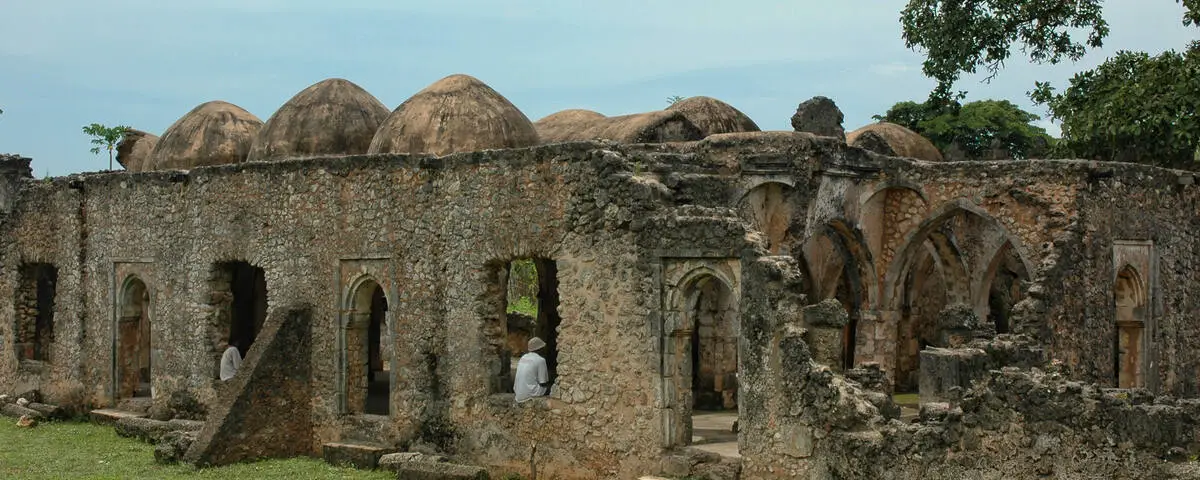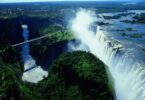Tanzania has a total of seven UNESCO World Heritage Sites.
UNESCO World Heritage Sites are a symbol of the cultural and natural significance of the country.
Tanzania’s seven UNESCO sites are part of the world’s 1052 world heritage sites. Out of the seven sites, four are natural while three are cultural sites. They are as follows.
Table of Contents
Kondoa Rock Art Site
Kondoa Rock Art Site is a cultural world heritage site on the eastern part of Tanzania along the Masai Escarpment. It was named a UNESCO World Heritage Site in 2006. The rock shelters are adjacent to the Great Rift Valley. Their existence and placement remain a big marvel to date.
Also read: 5 Little-Known Tanzanian Parks You Should Visit
They hang, somewhat precariously, but are firm at the same time. In the past years, they were used as rock paintings. Kondoa Rock Art Site has at least 450 painted rock shelters.
Artwork on the rocks along the eastern slopes has brought out the beauty of the region in a big way. Besides, the region is spectacular due to the ancient geographical formations of the rocks.
The Ruins of Kilwa Kisiwani and Songo Mnara
In 1981, UNESCO declared Kilwa Kisiwani and Songo Mnara world heritage sites due to their cultural significance. Kilwa Kisiwani and Songo Mnara are situated on two islands in southern Dar es Salaam.
Centuries ago, they were used as port cities and became the world’s most beautiful harbors for trade along the Indian Ocean. Arabs traded with the Chinese and Indians in these port cities.
Their glamour began to fade away when the Portuguese invaded the two islands and established a fort in Kilwa Kisiwani. Today, the two islands remain with the ruins of these ancient cities of monumental value to Tanzania’s history.
The Stone Town of Zanzibar

A Day in Stone Town (Zanzibar City, Tanzania) – Youtube
Stone Town in Zanzibar was 2000 named a UNESCO World Heritage Site. It is Zanzibar’s ‘capital city with a rich history of the island. In the pre-colonial era, Stone Town was a Swahili trade hub for the entire East Africa. The town came under heavy foreign cultural influences but defied it all to remain authentically Swahili.
Part of the cultural influence in Stone Town is clearly seen in its architectural designs. A blend of Swahili-European designs dots the entire town. Indian designs can also be found in some parts of Stone Town with the buildings still standing two centuries later.
Stone Town was the last place where the slave trade was abolished along the East African coast. A walk around the town brings about the aspect of the deeply-rooted Swahili culture here.
Kilimanjaro National Park
Kilimanjaro National Park is a natural world heritage site in Tanzania gazetted in 1987. The park sprawls beneath Mount Kilimanjaro, Africa’s tallest mountain. The mountain has given life to the park that was established in 1973 with an incredible Montane Forest. Wildlife abounds at the Kilimanjaro National Park with rich biodiversity.
Selous Game Reserve
Selous Game Reserve is Africa’s largest area that has not been affected by human activities. It was named a world heritage site in 1982. The reserve prides itself on having big numbers of the big five and a diverse ecosystem. Riverine forests, swamps, grasslands, and Miombo woodlands make up the beauty of Selous Game Reserve.
Also read: Quick Interesting Facts About Tanzania’s Tarangire National Park
Serengeti National Park
The Park was named a natural world heritage site in 1981. About 1.5 million hectares make up the savannah of the park famed for the Great Migration. Serengeti’s ecosystem remains an eye candy for the world with the highlight being the annual migration of wildebeest.
Endangered species; elephants, cheetah, wild dog, and black rhinos can be found at the Serengeti National Park.
Ngorongoro Conservation Area
Ngorongoro’s ecosystem is intriguing and captivating. Highlands, plains, savanna woodland, and a forested area make up the famous Ngorongoro conservation area. Ngorongoro Crater too sits here and supports the ecology of the area all year round.








